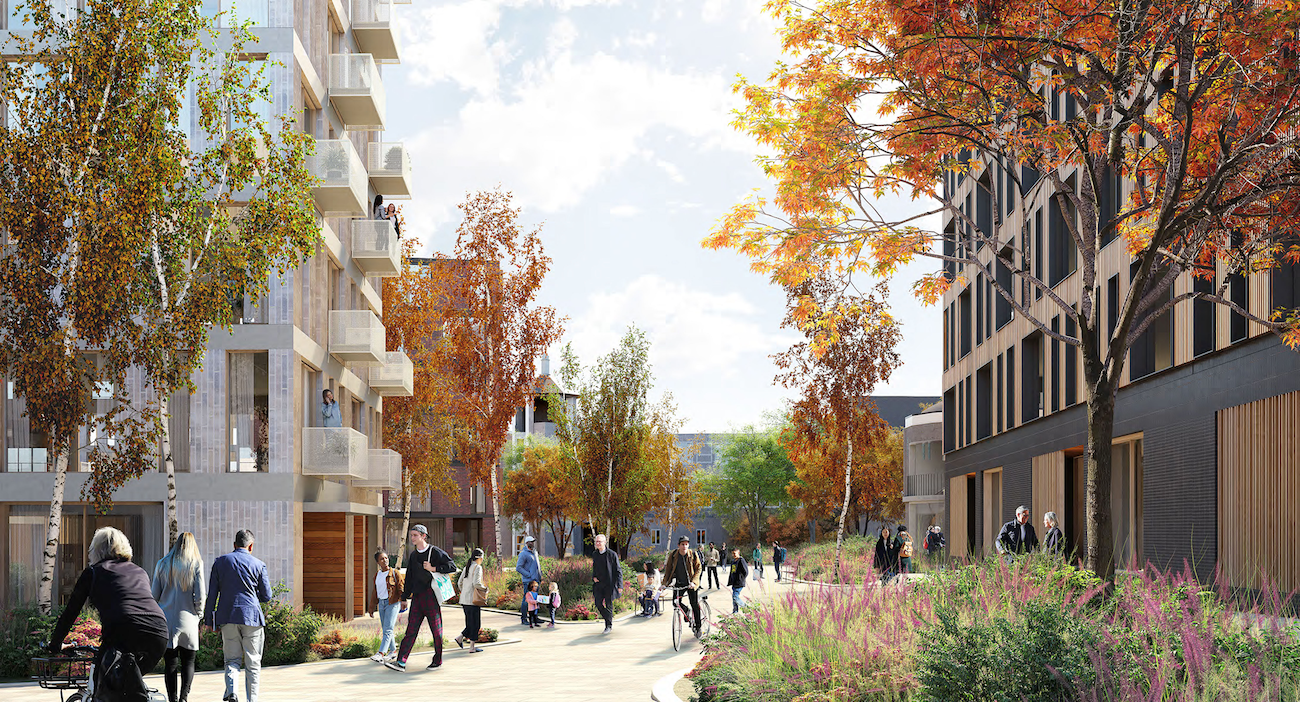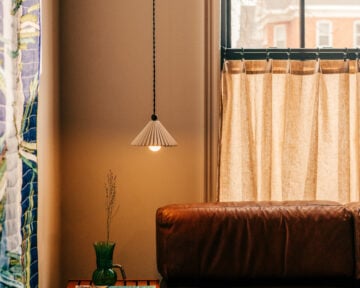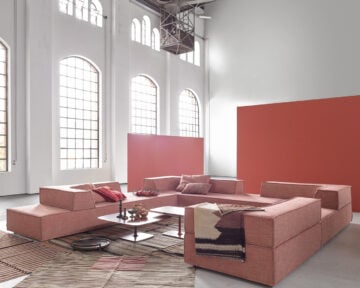Green Condos on the Rise

The best new eco-friendly condos going up utilize mass timber and green energy to net low- or zero-carbon building standards
We are in a climate crisis. This is especially relevant to how we live because buildings generate nearly 40 per cent of annual global greenhouse gas emissions. These emissions come from building operations and construction — the CO2 produced before and after the building is operational. A shift to mass timber as a replacement for concrete and steel in Toronto’s booming condo market is part of the industry’s response to the crisis. Timber has the capacity for long-term carbon storage (as growing trees remove carbon from the atmosphere), wood is less energy-intensive to manufacture than steel or concrete, and there’s extended carbon storage in wood products. Operationally, buildings that run on clean energy (available through electric and geothermal systems, for example) are another part of the low- or zero-carbon building equation. Meet eight local residential developments greening their construction and operations with a mix of innovative approaches that results in beautiful and sustainable places to live.

Photo courtesy of Gairloch Developments.
Grain Lofts
Designed by Gabriel Fain Architects for Gairloch Developments, with construction expected to start this year, Grain Lofts is “a new vision for a healthy city” – 28 lofts at 1650 Dupont Street, in Toronto’s Junction Triangle neighbourhood. The mass-timber building rises six storeys, with street-level retail and a three-sided, Japanese-inspired courtyard along its western property line. The courtyard handles the building’s storm-water management while adding more opportunities for natural light and views. Plus, there are private balconies for all units. As a slab-on-grade building with no underground structure and minimal reliance on steel beams, the design embraces a minimalist approach to the use of materials, especially those that have a big carbon footprint, like concrete and steel. Above the street, the building is constructed of Forest Stewardship Council–certified (FSC) mass timber prefabricated in St. Thomas, Ontario. Wood is used for the structure and finish, with exposed cross-laminated timber feature walls and ceilings; these are combined with contemporary kitchens, exposed ducts and corrugated metal exterior cladding toned to match the building’s context. GRAINLOFTS.COM. DW.

Photo courtesy of TAS.
880 Eastern Ave.
Designed by SvN Architects + Planners for TAS, 880 Eastern Avenue is a 12-storey purpose-built rental building that includes a mix of 167 apartments, townhouses and live–work units that will begin construction in winter of 2024. Notably, the neighbourhood was consulted through a meaningful community engagement process (led by a third party), informing core principles for the building’s design. While aspiring to be TAS’s first net-zero-carbon building, it respects the unique characteristics of its bounding streets and responds to them in its form and range of unit types. With an interior-facing courtyard, exterior walkways and balconies, there’s ample private and shared outdoor spaces, as well as single and double-height through-units accessed by an exterior corridor, creating units with natural light and ventilation from at least two sides. TASIMPACT.CA. DW.

Photo courtesy of Markee Developments.
Tyndale Green
Designed by Markee Developments as a solution to the rising cost of living and increasing threats to our environment, Tyndale Green was announced in June 2021. This rental community will integrate the Tyndale University area with green condos positioned to embrace walkability, ravine preservation and native plant sustainability on the grounds. Bringing residential homes, a new daycare facility and a community recreation centre, this green condo development is anticipated to transform the University campus and surrounding community. The development will be incorporating a green artery within the middle of the Western area of the community, as well as residential courtyards and a lowland meadow. Keeping all this in mind, Tyndale Green’s eco-friendly ambitions do not sacrifice beauty; buildings will incorporate a mix of composite and modular block cladding, and red and charcoal brick finishes. TYNDALEGREEN.COM. RF.

Photo courtesy of Westbank.
King Toronto
A 16-storey complex with 514 units that looks like it was taken out of eco-brutalist’s dream, King Toronto is a new development in rendering designed by architect Bjarke Ingels in collaboration with Westbank, Allied, and BIG. Comprised of four buildings and six unique penthouses such as the Greenhouse, Treehouse, La Bibliotheque, the Glasshouse, the Teahouse, and the Sanctuary, the project will improve walkability within the neighbourhood by providing new north-south pedestrian connectivity through the popular area. Additionally, the condo has access to a community garden and central courtyard that utilizes a weather system by Public Work to collect rainwater and convert it to mist. The complex brings biophilic design into modern living through its integration of plant life atop its glass-block facades to create a living facade. KINGTORONTO.COM. RF.

Photo courtesy of Tridel.
Tridel Habourwalk at Lakeview Village
Spanning 177 acres, this development crafted by architectsAlliance and II BY IV DESIGN brings together an innovative and sustainable community through design that has won the People’s Choice Award, Best High Rise Building Design, and Best Presentation Centre by BILD. Lakeview Village forms itself into a modular grove that showcases homes, a hotel, maker spaces, shops, and outdoor performance areas. The development focuses on connecting urbanism with nature through its series of parks that merge within walkways and buildings. Tridel has also focused on integrating green technologies and practices with their development projects through urban agriculture, low-carbon district energy solutions, and air tightness testing. TRIDEL.COM. RF.

Photo courtesy of Waterfront Toronto.
Timber House
Negotiations between Waterfront Toronto and Quayside Impact Limited Partnership are set to be completed this fall. The proposal? An L-shaped, 12-acre site at the foot of Parliament Street and Lake Shore Boulevard East, the former Quayside site of the Sidewalk Labs project now poised for a sustainable community development. It promises a two-acre forested green space, urban farm and five towers, plus one of Canada’s largest residential mass-timber buildings (Timber House), over 800 affordable housing units, and an all-electric, zero-carbon community. Lead architects include Adjaye Associates, Alison Brooks Architects and Henning Larsen (all from abroad), which will be responsible for the first block of buildings and setting urban design guidelines for the rest of the site. Early renderings of Adjaye Associates’ Timber House depict a long 12-storey green condos with groups of playful balconies that extend beyond a structural wooden grid on the exterior of the building, and rooftop activities like urban farming and community gardens. It will be many years before this project is completed, but when it is, it will be an exciting time to live in the city. WATERFRONTORONTO.CA. DW.

Photo courtesy of Kohn Partnership Architects.
Everhome
At 9704 McCowan Road in Markham, 30 kilometres northeast of Toronto, a new development of 130 green condos over four buildings designed by Kohn Partnership Architects (with interior design by The Walsh Group) for The Sher Corporation broke ground in June 2023. Architect Katie Kuzan describes how the uniqueness of the project lies in its massing, with high density along the main street as an urban facade and a rear courtyard flanked by two lower buildings and an amenity pavilion. As part of its corporate energy management plan, Markham requires all new developments to be LEED-certified. LEED (Leadership in Energy and Environmental Design) is a global certification program that provides a framework for healthy and efficient carbon- and cost-saving green buildings. At EverHome, this is achieved with geothermal heating (a zero-emission system that is clean and renewable), green roofs, rainwater collection and electric vehicle charging, plus proximity to bike paths and transit. Targeting a LEED Silver designation, the team also considered sustainability in terms of community, with an emphasis on bicycle and electric vehicle infrastructures. EVERHOMEMARKHAM.CA. DW.

Photo courtesy of Context.
Queen & Ashbridge
Marking one year of construction in June 2023, Queen & Ashbridge (QA) is a new mixed-use condo development located at 1555 Queen Street East, overlooking Ashbridges Bay and Lake Ontario at the corner of Woodbine Park. The design, by Teeple Architects (with architect of record Turner Fleischer Architects and interior design by Mason Studio for Context and RioCan), is stepped to maximize views and light, which generates a form akin to Santorini’s hill towns, with their cascading balconies and terraces. The 770 residential units are a mix of rent-geared-to-income and affordable housing units for Toronto Community Housing and market-rate condos and rentals. The 10- and 17-storey development, which also includes street-level retail, meets the Toronto Green Standard (TGS), version 3, tier 2. TGS defines the City of Toronto’s sustainable design and performance requirements for new private and city-owned developments, promoting sustainable site and building design. At QA, this means a geothermal system for the market condos and rental building, fully electric, low-carbon-emission mechanical systems, electric vehicle infrastructure, green roofs, tree planting, and stormwater retention and reuse. QACONDOS.COM. DW.










